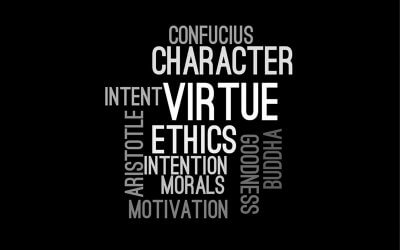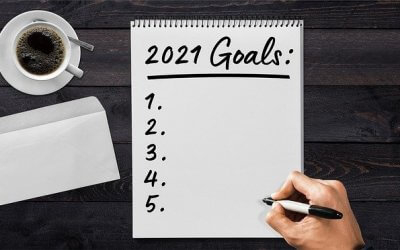We are all dealing with the impact of COVID. For some, business is soaring, others it is a struggle to survive. Whichever is impacting your business, it will impact compensation planning for 2020 and beyond. As I said a few months ago, your budget and plans as of March should be in the shredder and along with them your compensation structure.
From what I hear, companies are following the courses of action:
- Cutting or increasing compensation budgets;
- Changing work hours and/or rates of pay;
- Indefinitely laying off, or, significant increases in hiring; and
- Changing incentive and sales compensation plans (both plus and minus) to retain valuable talent and customer relationships.
So what is your company doing or planning to do? All your employees are wondering and watching, so the sooner you address these issues, the better. Communication is essential, and compensation is all about communication during times like these.
Your Financial Position
How has your business been financially impacted? Managing significant increases in business levels can be as challenging as big declines. Therefore, you need to have realistic forecasts, and an understanding of your ability to pay your employees is critical. Many have taken PPP loans; however, they were a bridge gap, and it looks like the canyon is much more extensive than the bridge. We will be living with the trials and tribulations of COVID for another 12 months or more, so Congress’ eight weeks cover is insufficient.
Review employees and their value to the “new” organization
It is time to review all your employees. Do they fit with the “new” organization and its direction? Many great people have been laid off, sidelined, or are unhappy in their current positions. Thus there is an opportunity to hire better people that would have been unavailable before or people you need to execute the pivot you are experiencing.
Also, look at your employees and determine:
- Who rose to the occasion, and who didn’t?
- Who has pulled their weight and more during these hard times?
- Who has lead and supported others when they were struggling?
- Who didn’t?
Now is the perfect time for a talent assessment exercise, e.g., a 9 Box matrix to determine who is performing and their potential in your “new normal.”
Review base compensation plans
How long is it since your compensation structure system was last updated? What data did you use to develop your base pay program? How was that data aged, and to what point in time?
Currently, it’s critical to understand your compensation structure and related pay practices. As businesses adjust to the “new normal,” compensation and pay practices are in a unique position. Some employees will receive a pay rate that is less than what they were making with unemployment compensation, especially with the federal support. Some employees will have received premium pay (e.g., hazard or appreciation pay differentials) because they were “critical workers.” How long will can you support this? How do you communicate with employees if, or when, you stop the premium pay? Since the COVID crisis continues unabated, how do you justify to your employees that they were critical a month ago, but not now, or not in four months when we expect the winter to make the crisis worse? Managing your communication is vital as you may alienate good employees who feel betrayed. Furthermore, realize that employees will have become dependent on the additional income.
The market is providing so many mixed messages about pay structure, that it is hard to know what one should do. Some of the views are:
- No need to adjust pay ranges this year, maybe not even next year.
- Reduce pay ranges temporarily, at least, which is becoming common, especially if it means keeping staff.
- To remain competitive and attract the best talent, you may need to increase your pay ranges.
- Those organizations that are reducing staff may need to increase the compensation of remaining employees who will have to take on additional roles and responsibilities.
- Those organizations pivoting to new markets, products or services and need new people, what industry norms do you use to determine pay structure?
Salary survey data lags the market and survey data will not be available until 2021 or later. Thus, without reliable data, you need to understand your competitive market for the people you need and determine what you can offer in that situation.
You need to review your employees’ compensation in terms of:
- New or fewer responsibilities;
- Value to the organization as a result of any changes due to COVID;
- Value to the organization as a team player and going beyond, or not reaching, what is required:
- Comparison-ratio data (current rate of pay divided by target/market rates) once the revised base compensation structure is determined.
It may be necessary to change starting pay rates for positions and employees in your pay structures. If, however, you are looking to reduce pay, ensure beforehand that you are not stepping into a minefield, and get advice from an HR professional. Issues to be avoided are:
- Reducing the compensation of those on contracts with specific payment;
- Appearances of discrimination or retaliation; and
- Reducing compensation of those on H-1B and E3 visas.
Finally, if reducing pay for existing employees, you need to communicate the changes, what will it take for compensation to return to previous levels. With regard to the trigger event to return pay, it must be something that everyone can see. If not it will seem arbitrary by management and therefore detrimental to morale and performance.
Review incentive compensation plans
With your strategic plan in now the shredder, hopefully, a new one is now ready or on its way. Your incentive compensation plan needs to be tied to your strategic plan to ensure alignment with the organization’s goals, and so incentive compensation should be adjusted annually. However, most companies will have to adjust mid-year as, during this accelerating period of COVID, six or more months is too long to wait.
Examine all your incentive plans and review them to understand all of the plan provisions. You need to stress test plans monthly in light of changing market and financial conditions to evaluate their impact on business and individual employees. The rapidly changing business environment requires careful examination of such plans to ensure they represent the intent of and are aligned with the business strategy.
For those employees who receive a significant portion of their compensation in the form of incentive compensation, there are several factors to consider.
- If your business plan is out the window, the compensation targets need to change.
- If, due to falling revenues, compensation is likely to drop dramatically, resulting in retention issues, then migrate more to base compensation.
- Adjust goals so that there are wins! Incentive compensated employees, usually salespeople, are very competitive. If you remove wins from their life, their performance may suffer.
- Those businesses that are realizing a significant increase in activity, incentive compensation is an excellent way to reward performance. However, a best practice is to establish maximum award payout levels as well as performance thresholds, as the increased performance may be due more to unexpected economic forces than the efforts of employees.
- If employees are likely to realize unexpected windfalls that are not a result of their efforts, be prepared to make adjustments
- Due to the uncertain nature of the economy, revisit your payout schedule to ensure it continues to make sense in today’s environment.
- Run Monte Carlo simulations on your incentive compensation plans to ensure that they don’t pose a risk to the company.
However, most of all, communication is key! Communicate clearly, early and often. Managing employee expectations during difficult times is critical. Failure to communicate no matter how good the resulting plans are will cause problems in the organization that could be damaging at times like this.
In case you missed it, communication is key!
Compensation is an emotional issue, and it impacts the lives of all your employees and their families. At this time, everyone is experiencing a great deal of stress:
- Is my job safe?
- Can my children return to school?
- Are my parents safe?
- Do I have enough cash to survive?
So now is not the time to add to that stress, as it will sabotage employee performance and thus corporate performance. Communication is essential — it is genuinely all about communication.
You cannot stop rumors and “water cooler” talk, especially in a virtual world. Thus, even if you say nothing, your employees are watching and listening. Your behavior, in the absence of a clearly stated rationale, will drive assumptions about both the organization’s and their own prospects. Many will assume the worst possible scenario.
No news is NOT good news during uncertainty and overly optimistic pronouncements, which contradict the information they see if even worse. Whatever the report, the employees still want to know what their leaders are thinking and doing concerning strategy and tactics. This communication will provide the background to the reasoning involved when making compensation decisions. While they may not agree, they will appreciate honesty and transparency. It will also stop the rumor mill, reduce wasted time due to stress and worry, and provide focus.
Therefore, your managers and supervisors must have conversations with their direct reports on what to expect, what you know right now, and what you don’t know yet.
Recent Posts
The “Flaw of Averages” Causes Havoc for Businesses
Discover how understanding the limitations of averages and embracing probabilistic thinking can improve decision-making and risk management in business.
What is Your Strategy, In a Sentence?
If you are banking on the vaccine returning us all to “normal” quite quickly, in the famous words of Dr. Akande, “Hope is not a strategy.” Your organization should be preparing a well-defined strategy for 2021 and beyond. Once you have this strategy, the ultimate question: can you clearly articulate it in one sentence? Distilling your strategy into a single sentence is a powerful tool, both for your legacy and your team effectiveness. Not sure where to start? I offer a plug-in formula to set up your strategy sentence.
Character Matters
“It’s easier to hold to your principles 100% of the time than it is to hold to them 98% of the time.” — Clayton Christiansen. I have often written about the importance of a company’s Core Values. That’s because no matter what words you may have chosen as values, your organization’s Core Values are on display in how leadership and employees actually behave. As I’ve said before, how you have acted in the last twelve months will define your career for the next decade. Your character, and your company’s character, matters.
New Year’s Resolutions, Once More Unto the Breach
The holidays have been even quieter than normal, which has given me plenty of time to reflect on my New Year’s resolutions. Looking at 2021, I decided to use a completely new approach to lay out my goals. The result of my new approach? A highly-detailed, accountable, actually achievable plan for the next year (I think). Wondering what this process looks like?
To Vaccinate or Not to Vaccinate, that is the Question
What do your employees, peers, and leadership team think of the COVID-19 vaccine? Will you require the vaccine, or will you let employees make individual decisions? As a leader, you need to steer the discussion about vaccines in your organization with your Core Values in mind. No matter what strategy your organization takes, the most important factor is going to be how you communicate your decision.
3 Ways You Could be Undermining Your Core Values
Can you answer “Why does your organization exist? What are your core values?” Great. Now, would your latest entry-level employee give a similar answer? How about someone who has been at your company for a year? Your core values give your organization a guiding mission. Many organizations pay this idea lip service, but their true commitment to their core values was tested this year. As we close out 2020, there’s no better time to examine how your organization is approaching your core values.
Are You Prepared for 2021 With Enough Cash?
Companies don’t go bankrupt because they lose money; rather, they run out of cash. Where are we, heading into 2021? First, you can expect your cash to get tighter as we weather the current economic slowdown. Then, with a vaccine on the horizon, you will need to be positioned for growth. If you don’t have the cash you need, have you looked at how you can generate the cash internally? More on how to improve your cash conversion cycle…
Tony Hsieh, a Corporate Culture Icon, RIP
In his work as Zappos CEO and elsewhere, Tony Hsieh believed, and proved, that culture is the most important thing in an organization. According to Hsieh, if you get the culture right, the rest will take of itself. How did Zappos do it? You can take a look at everything from the company’s interview questions, to “The Offer” to leave a position as a new hire. Hsieh believed that a company’s brand is just a reflection of the culture, and his legacy is felt across so many industries.
CEO, Try Thy Hiring System
How does your company hire? I’ve seen the good, the bad, and the surprisingly ugly hiring processes in my career. From the HR email mix-ups to the interviewer watching the World Series while I responded to his questions, I’ve learned that you can tell a lot about an organization simply by examining the hiring experience. Are you chasing away the kind of people you need at your company?
What is Leadership?
What is it, exactly, that great leaders do? There are plenty of overused adages about “leadership” in business. It’s worth examining the tropes around leadership, plus the traits of the leaders who actually leave a mark. Great leaders are forged through adversity, and they leave a legacy. What does that look like in your organization?











